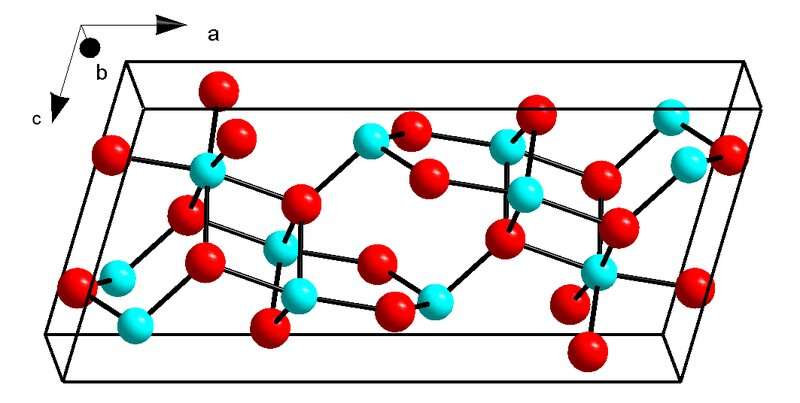
As a crucial part of spectrum analysis, solar-blind ultraviolet photodetectors (SBPDs) are applied to many fields. Because of their specialized applications, they have to cope with harsh environments such as overabundant temperature and radiation. Therefore, a substitute for traditional silicon-substrate SBPDs is needed.
In a study published in Advanced Materials, a research group led by Prof. Long Shibing from University of Science and Technology of China (USTC) of the Chinese Academy of Sciences developed ultra-sensitive SBPDs for harsh environments using amorphous gallium oxide (AGO).
Gallium oxide, featuring a wide bandgap and heat-resistance, is capable of preserving SBPDs’ sensitivity. Furthermore, AGO was found with good performance and compatibility as it can be easily manufactured and integrated.
To overcome AGO’s shortcomings such as low stability and high defect density, the researchers designed gallium oxide SBDPs of high tolerance.
Defect and doping (DD) engineering was adopted, including the design of gallium-rich AGO, the annealing for recrystallization, and the doping supplementary. The gallium-rich material was the key to a high-response current and the introduction of doping supplementary, while nitrogen annealing contributed to photo-detecting by measures such as partial recrystallization and nano-pores forming.
The researchers found that gallium-rich material and nano-pores intensified solar-blind reactive currents, while measures like crystallization, defect reduction and doping supplementary weakened dark currents. The gallium oxide film was toughened by heated nitrogen, enhancing both its photoelectric performances and its tolerance against extreme conditions.
SBPDs based on DD engineering showed good performance such as high resistance. Devices under engineering processes showed superior spectrum-selectiveness in many aspects, and sharp sensitivity under extreme conditions. SBPDs made of gallium oxide are used in the field of ultraviolet detection. DD engineering paves the way for designing other photoelectric devices.
More information:
Xiaohu Hou et al, High‐Performance Harsh‐Environment‐Resistant GaO X Solar‐Blind Photodetectors via Defect and Doping Engineering, Advanced Materials (2021). DOI: 10.1002/adma.202106923
Journal information:Advanced Materials
Provided by
Chinese Academy of Sciences

READ MORE
How to program DNA robots to poke and prod cell membranes
Credit: AI-generated image Scientists have worked out how to best get DNA to communicate with [...]
A Quarter of All Reptile Species, Many of Them Endangered, Are Sold Online
The Tokay gecko is a species native to Southeast Asia, where a large percentage of [...]
Cannibalism: Cultures, Cures, Cuisine, and Calories
Theodor de Bry, America, Part 3, 1593/Library of Congress, Washington, D.C. (neg. no. LC-USZ62-45105) Perhaps [...]
Apollo at 50: We Choose to Go to the Moon
Apollo’s Legacy SMART NEWS Scientists Prove That Plants Can Grow in Soil From the Moon [...]
Lab-spun sponges form perfect scaffolds for growing skin cells to heal wounds
(a) PCL sponge 26 w/v%, 15 cm, 20 kV, and 10,000 µL/h, 26 °C, 60% [...]
Are We Grooming Beaches to Death?
The Santa Monica State Beach is an allegory of North American consumerism. Every morning, cleaners [...]
Contraceptive Gel Called the “IUD For Men” Makes It Through Monkey Trials
When it comes to reversible ways to prevent pregnancy, men have limited options—for now. Georges [...]
How to Remove a Bathtub
One of the first rooms in the house to get remodeled is the bathroom. Because [...]